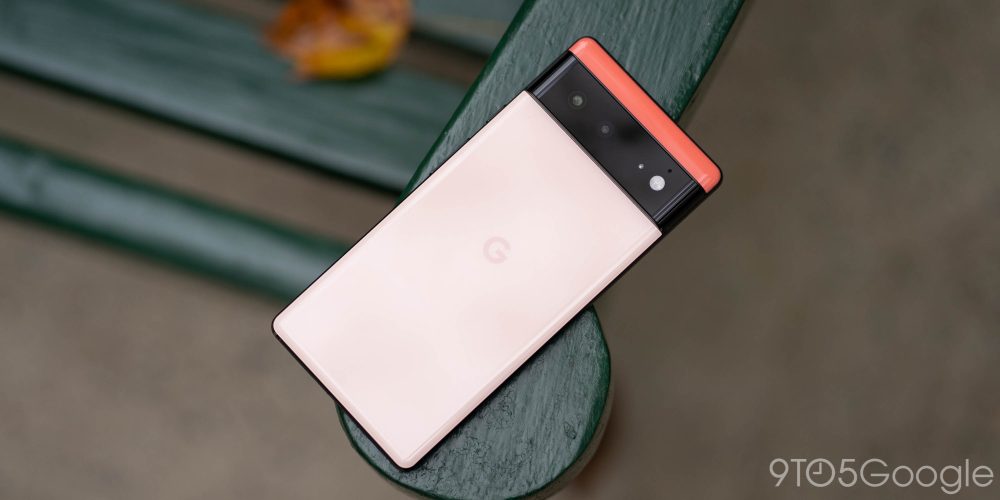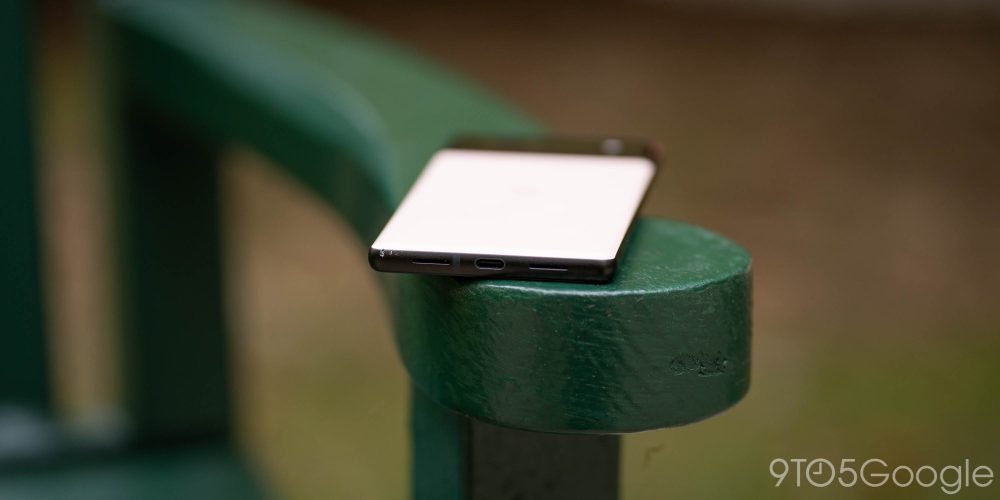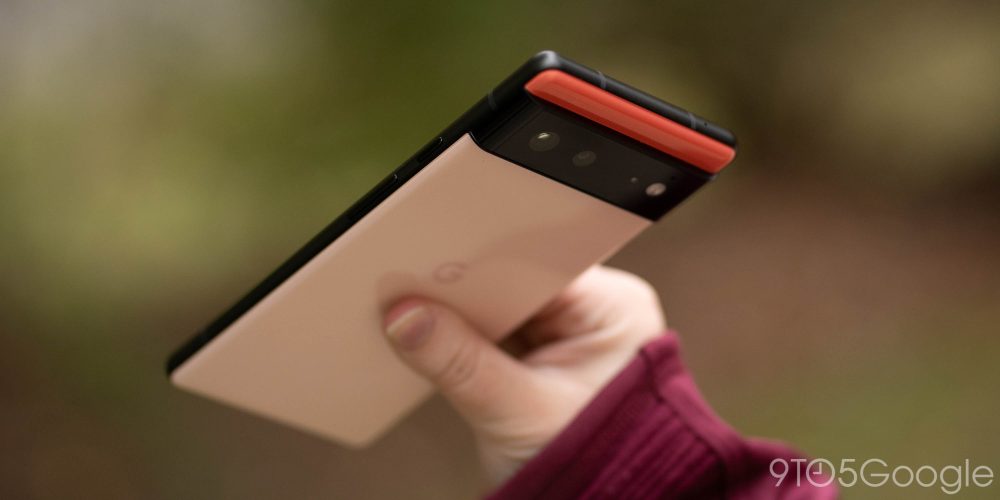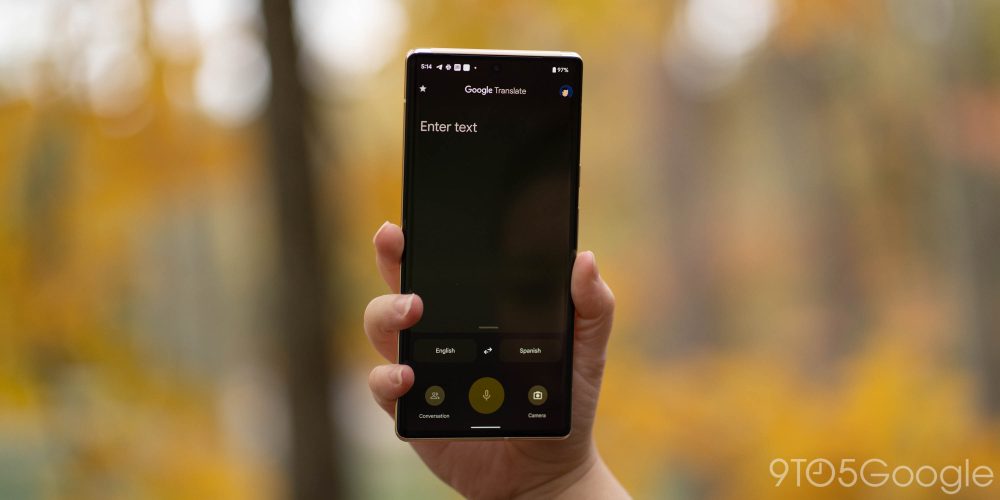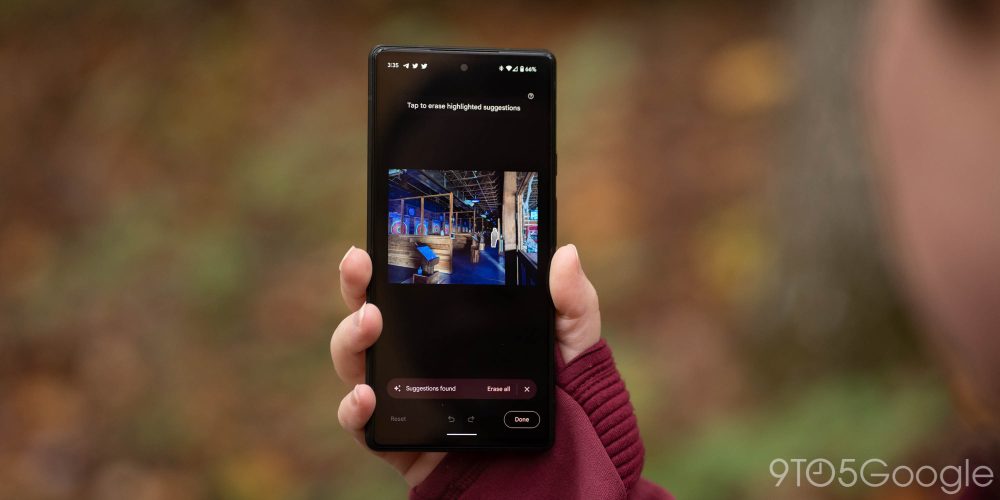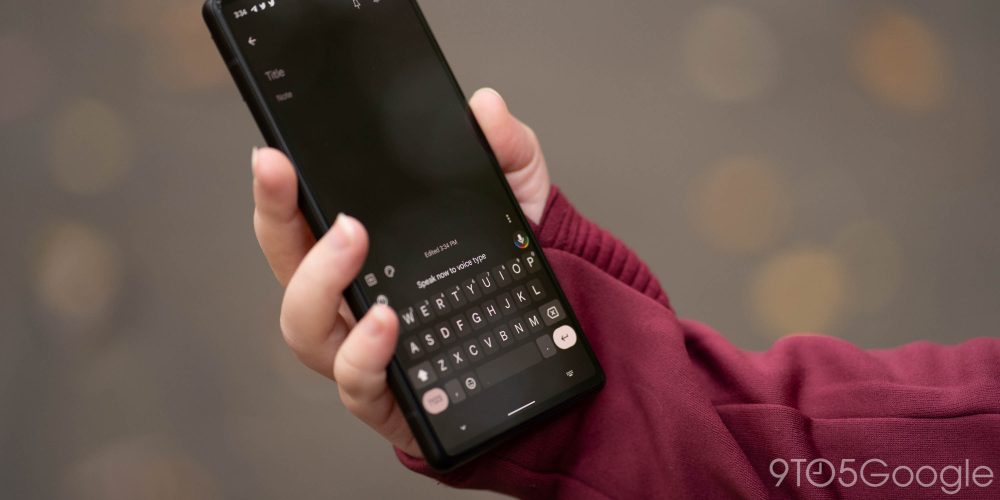
The Pixel 6 series is a reinvention of the company’s smartphone lineup, and that’s obvious on the Pro. The standard model, however, takes a step back with a design that feels more Google-ly, with specs that hold up to that flagship and a price that arguably makes it the best deal for a smartphone today.
Our review of the Pixel 6 speaks largely in comparison to the “Pro” model, so we highly recommend you to read our review of that device here for more information on new features and more context about this release.
Hardware
If there’s one thing that’s always been true about Pixel designs, it’s that they’ve always stood out. Each device, especially from the Pixel 2 forward, has had a distinct look and feel that could only come from Google. The look and feel has, of course, evolved over the years, with the Pixel 4 series adopting matte black rails and a larger camera module, but they’ve all felt like they fit into Google’s aesthetic.
Out of this year’s two flagships, the standard Pixel 6 is the one that best keeps up this tradition. It has the matte black rails of the Pixel 4, a milder version of the Pixel 2 XL’s two-tone look, and the pastel colors with whimsical names that only Google could come up with.
The design of the smaller phone in Google’s lineup is one that, personally, I much prefer to the Pro. Visually, it’s a more inviting and unique look, and I feel the black rails help the camera visor blend into the design. Practically speaking, too, the matte texture on the rails gives this phone more grip (which definitely needed with the glossy glass back).
Perhaps the only negative of the design comes from the screen bezels, which are just a bit bigger than the average. Still, the bezels on this phone are far from large, and they’re not obnoxious by any means. They’re just… a bit bigger. It’s fine.
The display in between those bezels can be described similarly; it’s fine. The 6.4-inch 1080p display is an AMOLED panel that’s sharp and bright enough for outdoor use, but there’s nothing particularly spectacular about it. You can definitely tell the difference between 1080p and 1440p when putting the Pixel 6 and the Pro side-by-side, but on its own, the 1080p panel holds up just fine.
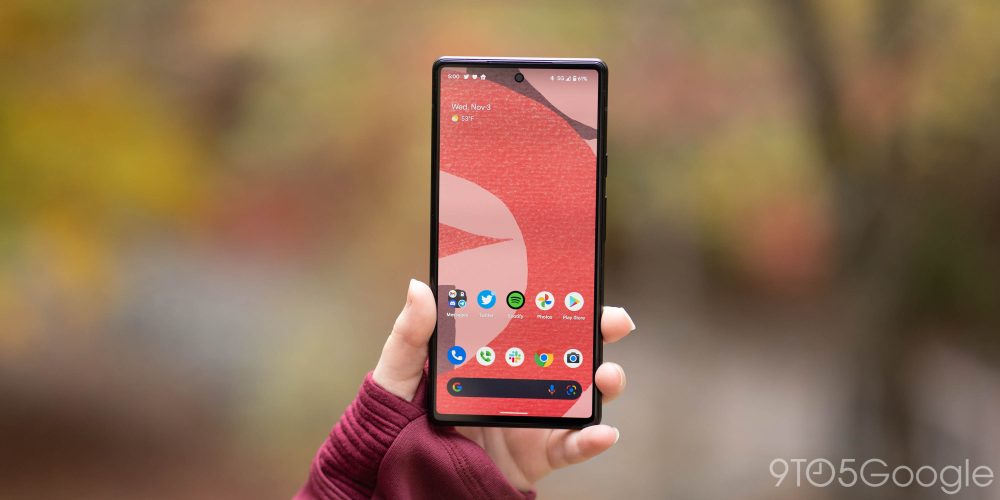
That said, it’s not without issue. I do wish this was a 120Hz panel, but not because of the higher refresh rate. Rather, I would have liked to see Google using an LTPO(Low-Temperature Polycrystalline Oxide) panel with a variable refresh rate, as that can have an impact on battery life. The other quirk about this display is the quality at different viewing angles. It’s minor, but at certain angles, the color seems to shift, especially when looking at bright UI elements. This will likely go unnoticed by most people, but it’s something I picked up on relatively quickly. Brightness also holds up to the competition; I had virtually no complaints – even using the phone on a sunny day outdoors.
I think everything about the Pixel 6 is entirely sound, but the size is definitely not ideal. This is a big phone no matter how you slice it, but especially if you compare it to the Pixel 5 and other previous Google flagships. It’s tall, it’s wide, and at times it’s just cumbersome to hold.
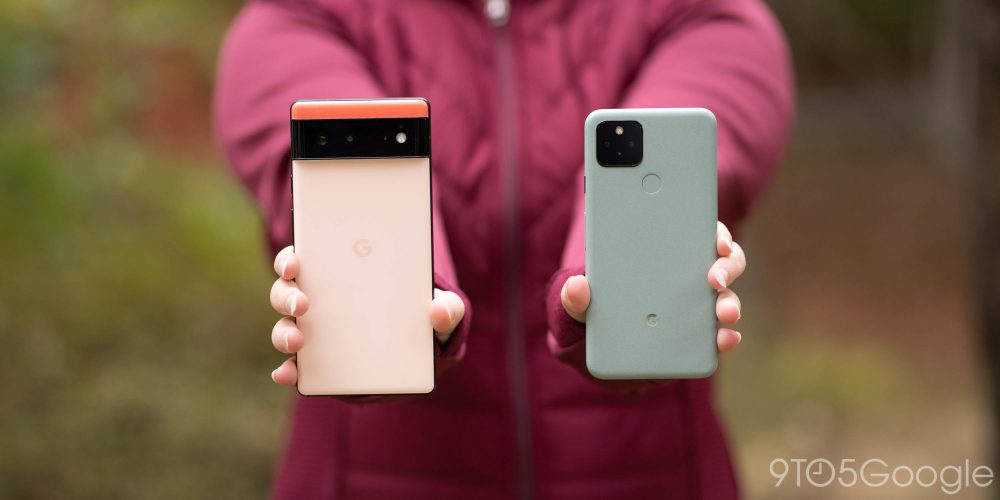
That said, it’s a size that I think strikes a decent middle ground. Despite being just 0.3-inches smaller than the Pixel 6 Pro, the standard model is much easier to use one-handed – in part because of its matte rails.
One thing I found interesting, too, was the weight. The Pixel 6 is about the same weight as the Pro, and as a result, its slightly smaller size feels very dense. I don’t consider this a bad thing. In fact, it feels a bit more premium as a result.
Software & Performance
Meanwhile, in the software department, everything about Android 12 on Pixel 6 is just as good as it is elsewhere. Like the Pixel 6 Pro, Google’s latest major release adopts Material You designs and colors that match your wallpaper. It’s also a nice touch that on the “Kinda Coral” unit I’ve been testing, the setup flow was themed to match the phone’s physical color.

Unfortunately, just like on the Pixel 6 Pro, Android 12 feels unfinished and rough around the edges. I had issues with the same apps on this phone as I did on the Pro (notably, Feedly continues to crash on login), and there were minor bugs from time to time. One of the bugs I found myself coming across more on this device was the notification tray going translucent at random, but that can probably be attributed to the longer period of time I’ve been able to use this model.
The good news, though, is that the performance difference between Google’s $599 phone and its $899 phone is essentially imperceivable in normal use. The same Tensor chip is used on this phone, and it offers the same level of power and AI processing, leaving the UI fluid, language processing blazing fast, and really just not skipping a beat on general tasks. Like the Pro, I noticed it tends to heat up relatively quickly when games are being played, but not to an uncomfortable degree, and performance was up to my own expectations. A gaming phone this is not, but it should do the job just fine.

What I couldn’t stop thinking about while using the Pixel 6 was its price, and specifically what you’re getting for that money.
First and foremost, you’re getting Google’s “ideal” software experience, which is Android 12 with Material You and all of its apps pre-installed. But beyond that, you’re also getting the best versions of many of those experiences. For example, with Gboard. Not only do you get a tried-and-true keyboard, but you get one with voice typing that is faster and more accurate than any other experience out there today, with editing on the fly while using voice and the incredibly fun Emoji Kitchen (which isn’t exclusive to Pixel, just pre-loaded) just to top it all off.
Then, there’s Google Photos. You’ll get the same app, the same backup policy – no unlimited storage here, sadly – but with a few great feature additions. There’s Magic Eraser, which can take any photo in your library and fairly convincingly strip photobombers or objects out of the frame in seconds. The Photos app on Pixel also works as the default gallery app, meaning Android won’t prompt you with additional permission requests.
These examples just scratch the surface, really, as to this point. Call Screen for toning down spam calls, Car Crash Detection for potentially saving a life, faster translations in Google Translate; it’s all included on this device. For $599, you’re getting the best Google software in the best form on hardware that keeps up with basically every flagship available today. It’s a great value proposition and one I’m not sure you’d get from a lot of other competitors.
Battery
One thing I did not expect to impress me on the Pixel 6 was the battery life. On paper, the 4,600 mAh power pack is plenty enough for good endurance, but I figured the 6.4-inch, 90Hz display would have more of a negative impact.
I was definitely wrong, in a good way.
On the whole, the battery life of the Pixel 6 has thoroughly impressed me. I’ve not had a single day where I’ve fully drained the phone between 8 a.m. and midnight, and generally speaking, I can easily pull up to 6 hours of screen time out of that same timeline. It’s easily the best battery I’ve personally used in a Pixel smartphone so far (though I’m relatively sure the Pixel 5a beats it out quite considerably). By our Kyle Bradshaw’s description, that phone is an “unkillable battery monster.”

Some of the early quirks of Tensor, and specifically the modem this phone is using, may mean that your results vary if you’re more often on mobile data. However, I think the vast majority of people will be exceptionally happy with the endurance here.
Camera
Google’s smartphones have always been known for their stellar camera performance, and the Pixel 6 keeps up that legacy. The new 50MP primary sensor is, just like on the Pro model, stunning. The colors are rich, the details are very sharp, and I love the natural bokeh this updated sensor brings.
More time with this new primary camera has shown me how aggressive Google’s HDR is right now. It really does feel like the software is still overcompensating for the older 12MP sensors on other Pixels, leaving some Pixel 6 shots overly sharpened. This doesn’t happen constantly, and I can’t say it’s ever ruined a shot for me, but it would be nice if Google toned this back a little bit, especially on faces.





However, that main sensor is really the only one that’s a highlight in the camera department. The 8MP front-facing camera is average at best, and the ultrawide camera is 12MP and… fine. It’s not wide enough, in my opinion, but the shots it takes are generally very good, especially in good lighting.
But the biggest drawback of the Pixel 6’s camera setup is that it lacks a telephoto lens. The Pro’s telephoto lens is, quite honestly, the best reason to buy that device over the standard model, as it enables not only further zoom – the standard 6 is limited to just 7x zoom, where the Pro can go up to 20x – but also very sharp shots at its standard 4x. You can get a totally different, usually even better shot, out of the 4x from a distance than you might be able to get from the standard lens close up. Since moving over to the standard model, I’ve found myself reaching for the Pro when it’s around to capture shots that I know the smaller one just wouldn’t do justice.




Is that going to be a deal-breaker for some people? Yes, I think it might be. However, this isn’t the only “standard” phone that lacks a telephoto lens, and in comparison to those devices, I think the value speaks for itself.
To not beat around the bush, the Pixel 6 gives you the best camera for the least money, hands-down. There’s just no argument here. You will not get a better camera experience for $599 on any other device. The closest competition is probably the iPhone 13, which starts at $799. Telephoto or not, it’s just hard to be mad here.
But beyond just the quality of the sensor, it’s once again Tensor that helps Google stand out. The stronger and customized image processing enabled by Tensor allows Google to process images after they’ve been shot much quicker than the company’s more affordable A-Series devices, as well as faster than last year’s Pixel 5.
And on top of that, Tensor enables more features. There’s “Motion Mode,” which can capture movement in an image and process it quickly, as well as Live HDR in video, which looks just as good on Pixel 6 as it does on the Pro. It still lags behind the iPhone, but the video quality is certainly acceptable, and it’s just as good as the best Android phones.

Tidbits
Official cases aren’t usually worth the money, but Google’s options have long been an exception with the unique fabric Pixel cases. Infuriatingly, those cases are gone, replaced with a generic TPU case that is incredibly boring. The quality of the case is fine, and I do like the translucent matte finish that lets you see the phone’s dual-tone colors without it being a fingerprint magnet, but the fabric cases were just so much better. They were pleasant to hold, and the phone was easy to slip in and out. Meanwhile, the Pixel 6’s new case specifically is a chore to put on, with an incredibly tight fit. The good news, though, is this one almost certainly has better drop protection.



Plus, the fabric cases used quite a lot of recycled materials, while the new TPU cases use less. This isn’t a change that directly affects you as a buyer, but it’s certainly a negative considering how many cases out there are made so irresponsibly.
Keeping things quick and simple, haptics on the standard model are identical to the Pixel 6 Pro, and that’s to say they’re very good. Do they beat the iPhone’s Haptic Engine? No, but they hold up very well.
As for the fingerprint sensor – once again – it’s fine! It’s an optical under-display fingerprint sensor that’s a bit slower than the likes of what OnePlus uses, but I don’t have much of an issue with it after nearly two weeks of using it between the Pro and standard models. It’s a bit slower and slightly picky about your placement, but it gets the job done. Once muscle memory kicks in, I don’t think you’ll have any problems.
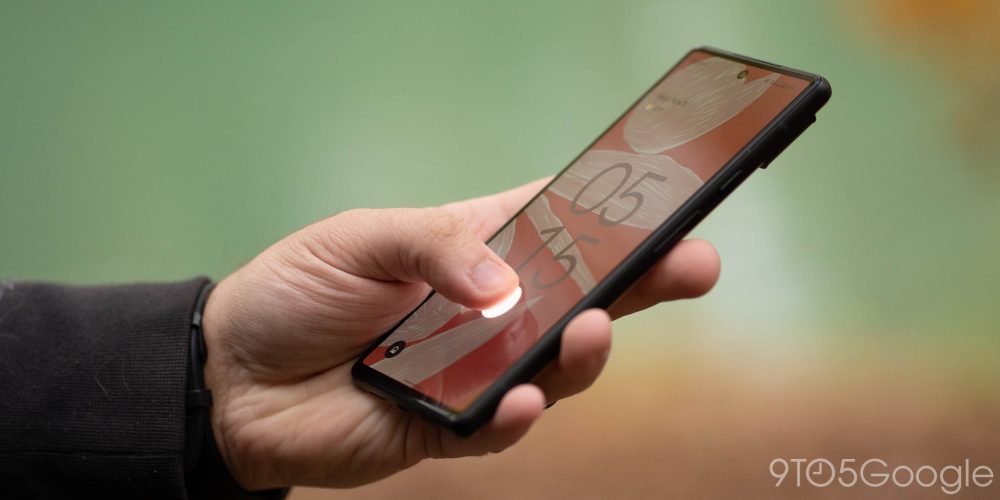
The speakers on the standard Pixel 6 are fine as well, with audio that cranks up fairly loud and is mostly pleasant to listen to, but it’s a far cry from the best in the business.
And as a final aside on these little tidbits, I adore the buttons on this phone. They’re very tactile but not overly resistant, and they don’t shake around as much in the housing as the ones on the Pro model do. I do wish Google had kept its wonderful colored accent button, but alas, it is no more.
Final Thoughts
The smaller Pixel 6 is, quite simply, one of the best deals on the market today. For $599, you get a flagship-tier device with one of the best cameras, an excellent design, software support that outlasts any other Android phone, and battery life that’s extremely good in our experience.
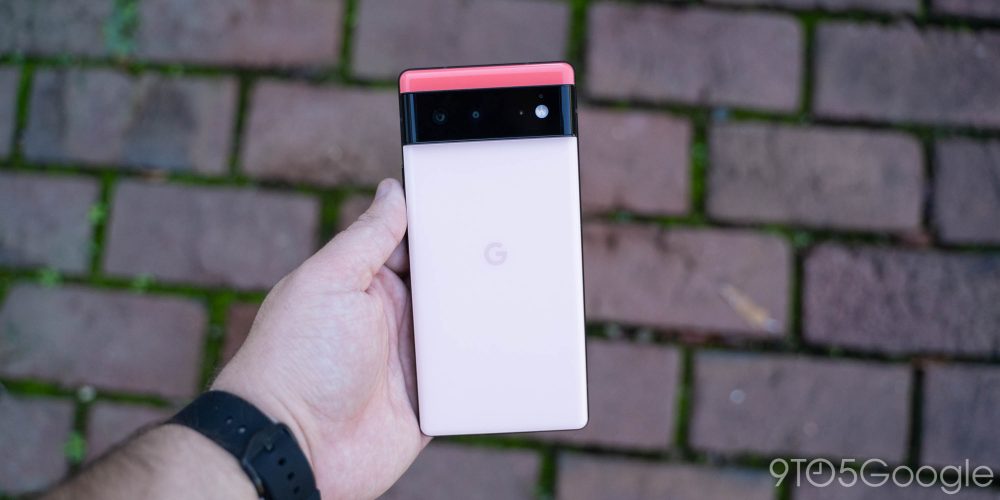
Even without the 120Hz display, telephoto camera, and other little upgrades you get on the Pro, it’s a very compelling phone, and, given the price difference, it actually feels like the better device out of the two. I would have a tough time deciding between these devices, but the Pixel 6 is so much closer to my personal wants and needs that I’m definitely leaning towards using this as my personal phone instead of the Pro.
Now that we know stock for the Pixel 6 Pro is so hard to come by, this affordable model becomes even more compelling. If you’re due for an upgrade and want to try out Google’s offering, you can’t go wrong with the standard model. It’s the best deal you’ll get on a smartphone today, and there are no deal-breakers in the entire experience.
You can buy the Pixel 6 from the , , , , , B&H Photo, Amazon, , and other major retailers in the United States.
Author: Ben Schoon
Source: 9TO5Google



